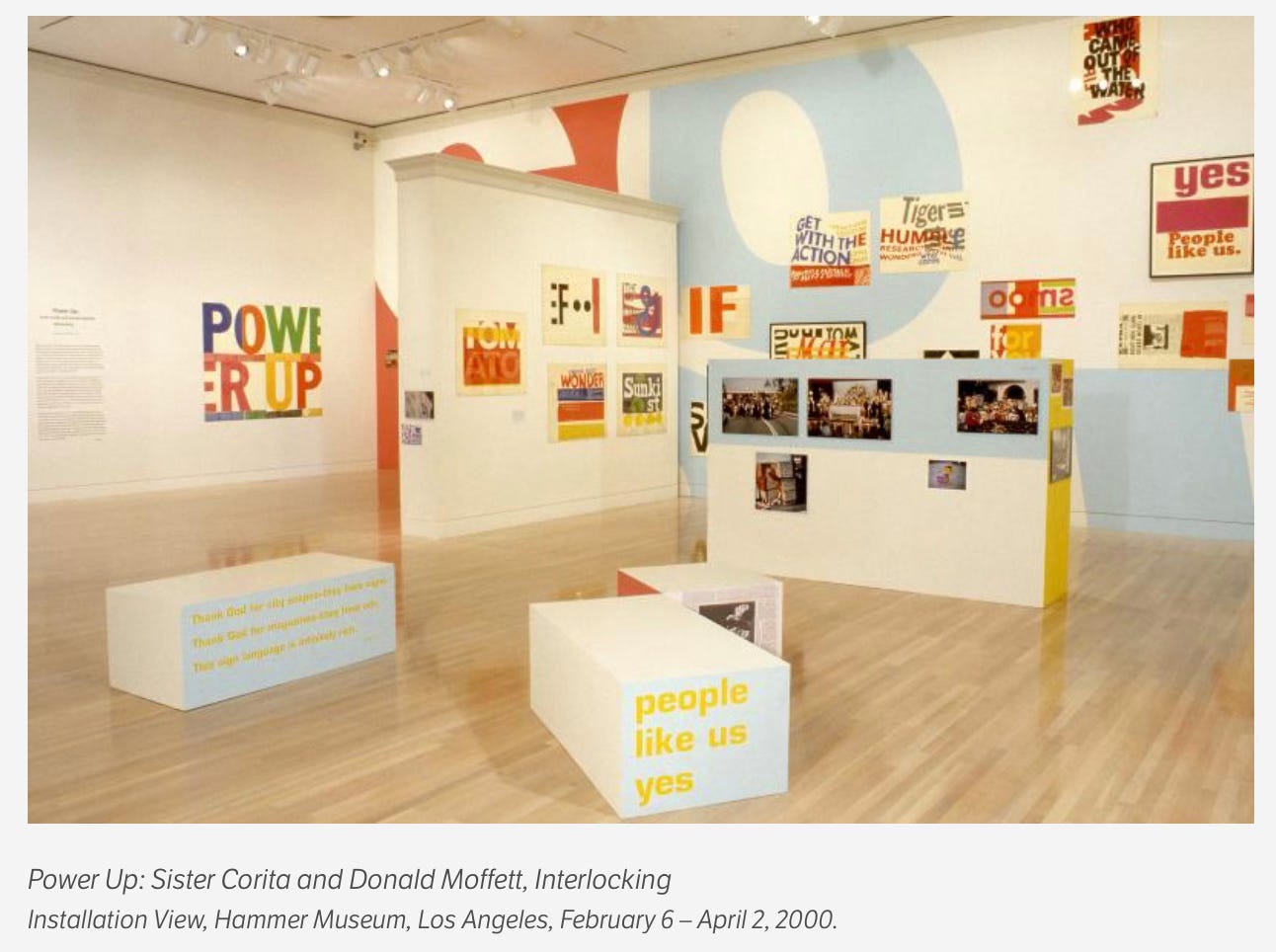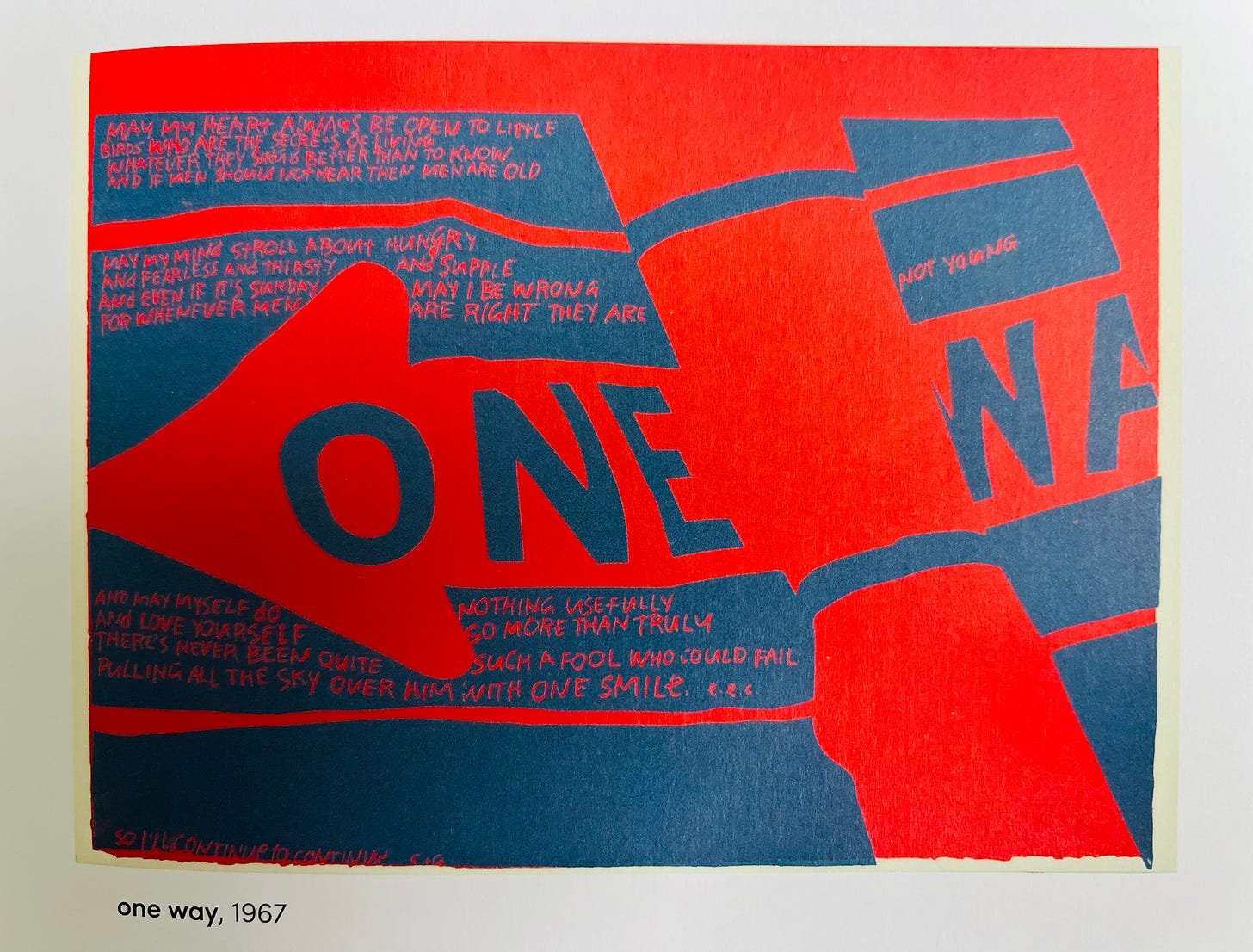Your Art Might Be Dangerous: Pop Art with Heart
"Every song has a memory; every song has the ability to make or break your heart, shut down the heart, and open the eyes." - Andy Warhol
What makes art truly powerful?
Can art that speaks from the heart be dangerous?
If your art could inspire change, would you be willing to face the risks?
What would you want to say if people were really listening?
And in a world where making a statement can come at a cost, what does it mean to create art from a place of conviction?
These are questions that Corita Kent—a nun, artist, and activist—answered boldly with her art. Her story, and the heartfelt messages popped into her art challenge us to think beyond beauty and towards purpose, reminding artists and audiences alike: Sometimes, the most profound art is also the most daring.
In the mid-20th century, Corita Kent took the art world by storm, not with overt rebellion or edgy realism, but with a brightly coloured, bold, and heartfelt version of pop art. Her work stood apart, inviting viewers into both a gentle and confrontational world, political yet deeply personal. Kent, a Catholic nun for most of her life, transformed the space where art and activism overlap, filling her works with powerful messages of peace, love, and social justice. But her work posed a compelling question that remains relevant today: Can art born from the heart—and aligned with strong beliefs—be seen as dangerous?
The Unlikely Activist
Corita Kent didn’t start her work intending to spark movements. Born Frances Elizabeth Kent in 1918, she entered the Sisters of the Immaculate Heart of Mary in Los Angeles as a young woman. But rather than withdraw from the world, Kent engaged with it through her artistic practice, creating bold prints that spoke to the heart of American culture and its challenges. She used art as a form of dialogue, expressing her faith through reflections on love, justice, and community.
Corita Kent’s art is known for integrating commercial visuals with social messages, which she achieved by creatively repurposing popular slogans and visuals from advertisements to promote peace, love, and justice. One of her well-known pieces, Wonderbread (1965), uses the iconic Wonder Bread packaging—recognisable for its bright colours and bold text. She transforms this into a meditation on spirituality and nourishment, challenging viewers to consider "bread" not just as food but as a symbol of spiritual and communal sustenance. By playing on the brand's visual identity, Kent encourages viewers to question what truly sustains us in society.
In the Power Up series, she reinterprets the aesthetic of commercial billboards and signage with messages that evoke hope, empowerment, and community action. She employed bold typefaces similar to those in advertising, yet her slogans, like "We Can Create Life Without War," infused commercial graphics with political messages. This juxtaposition highlighted the power of words and visuals in driving social consciousness rather than consumerism.

The Cost of Speaking Out
Kent’s life is a case study in the cost of producing heartfelt work that critiques established norms. Her art was not always warmly received. In fact, her dedication to social justice and her public protests against the Vietnam War and other political issues often placed her at odds with the Catholic Church. The messages she embedded in her art were simple but powerful: peace, love, empathy, and social responsibility.
Her controversial work eventually led to her departure from the order—a separation from a life she had devoted herself to for decades. This was no small sacrifice. Kent’s story underscores a tension many artists face: when creating from the heart, what compromises might one have to make? Is art still valuable if it requires the artist to walk away from communities they hold dear?
Pop Art with Purpose
What sets Corita Kent apart from many pop artists is that her work wasn’t aimed at satire or irony. Instead, she infused her art with deep, sincere passion.
The bright colours and catchy fonts of her prints are a stark contrast to the heavy social commentary she made. Works like Love Your Brother or Power Up are both affirmations and challenges, inviting viewers to question how they relate to society’s prevailing values. Through art, she cultivated empathy and understanding in a way that words alone often cannot.
Kent believed in art as a tool for societal good. She once said,
“We can all talk to God, we can all understand and know things in the world by listening and being aware.”
Her hope was that people might view her art not as statements but as questions, asking viewers to think and, ultimately, act.
For modern artists, what role does empathy play in their work? How can art bring people together rather than polarise them?
Art as a Call to Action
In a world often divided by political and ideological boundaries, Kent’s art calls to mind the question of responsibility. Her work was, and remains, a call to action—not just for her audience but for artists themselves. In every piece, there’s a clear message: art matters, and it should engage with the real world.
Her art often feels like a conversation, one that challenges, consoles, and, most importantly, refuses to ignore the issues of the day.

Today, artists inspired by Kent may wonder how far they should go in sharing their convictions.
Can art that truly resonates also be socially safe? Or is the risk of alienation an inherent part of making work that matters?
The Heart of the Matter
Kent’s legacy teaches that art made with heart might indeed be dangerous, but perhaps in the best possible way. Dangerous not because it threatens individuals but because it disrupts apathy and invites awareness. Her work remains a timeless affirmation to the power of sincerity, as relevant in a digital age as it was in a world before social media. For any artist striving to create from a place of conviction, Kent’s journey is a reminder that art from the heart will never be trivial, even if it’s not universally accepted.
In a world saturated with content, what will make your art stand out? What matters enough to you that you’d make sacrifices to put it into the world?
By looking at Corita Kent's life, we’re reminded that creating art from the heart is rarely simple, but always significant. So, yes, your art might be dangerous. But if it’s rooted in love, empathy, and truth, isn’t that exactly the point?




